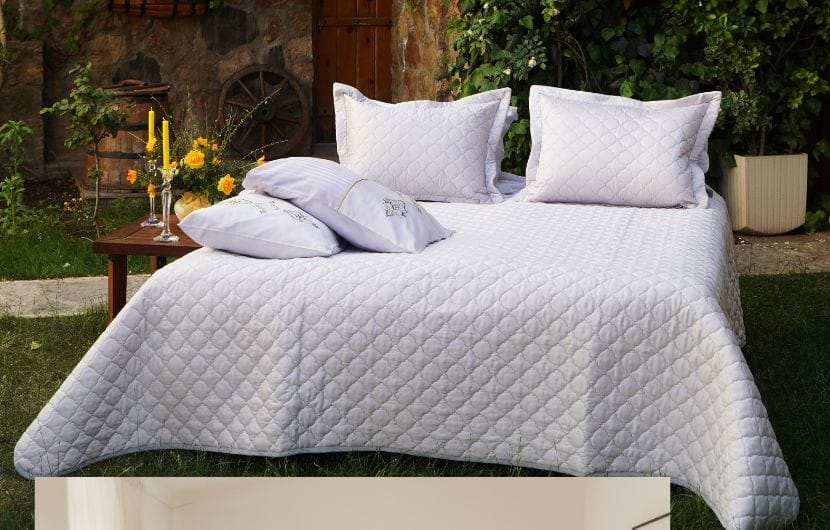Blog
How to Find the Right Size Bed Sheets
Finding the right size bed sheets can be tricky, especially with the variety of mattress sizes and depths available today. If your sheets don’t fit properly, it can lead to uncomfortable nights and a disheveled bed. To ensure the perfect fit, you need to measure your mattress’s length, width, and depth, and then compare those measurements with the sheet manufacturer’s specifications.
This article will guide you through the steps of measuring your mattress correctly and selecting sheets with the right fit, including pocket depth so that you can enjoy a snug, comfortable, and well-made bed. By the end of this guide, you’ll know precisely how to choose the best sheets for your bed, making your shopping experience more straightforward and more successful. Let’s dive into the details!
Understanding Standard Mattress Sizes
The first step in choosing the right bed sheets is to understand the different mattress sizes. Here’s a quick reference to help you find the correct match:
Standard Bed Sizes
- Twin: 39 x 75 inches
- Full: 54 x 75 inches
- Queen: 60 x 80 inches
- King: 76 x 80 inches
- California King: 72 x 84 inches
It’s important to note that mattress sizes can vary slightly from one manufacturer to another. Always check the specific measurements of your mattress to avoid confusion.

Pocket Depth: Why It Matters
It’s not just the length and width of your bed sheets that matter—it’s also the depth of your mattress. Mattress depth, or height, can vary, especially with the trend of deeper mattresses. This is where pocket depth comes in.
How to Measure Pocket Depth
- Measure the height (depth) of your mattress from the top to the bottom.
- Sheets typically come with pocket depths ranging from 12 to 18 inches, but deeper mattresses (over 16 inches) require sheets with deeper pockets (up to 20 inches or more).
If your mattress is exceptionally thick, make sure to choose deep-pocket sheets to avoid the frustration of ill-fitting sheets.
Fitted vs. Flat Sheets: What’s the Difference?
You may have heard the terms fitted sheet and flat sheet, but what’s the difference? Understanding these terms is crucial when selecting the proper sheets for your bed.
Fitted Sheets
Fitted sheets are designed to cover the mattress snugly, with elasticated corners that hold them in place. They are meant to be placed directly on top of your mattress.
Flat Sheets
Flat sheets are typically placed on top of a fitted sheet or beneath a duvet or blanket. They are larger and are not designed to stretch over the mattress.
If you’re looking for an extra layer of protection for your mattress, a Waterproof Fitted Sheet is a great solution. This type of sheet not only fits snugly around your mattress but also provides an added layer of defense against spills, stains, and allergens. For high-quality options, check out QL Textiles, a trusted Waterproof Fitted Sheet Manufacturer offering durable, comfortable, and practical solutions to protect your mattress for years to come.

Selecting the Right Fabric for Comfort
Sheet material plays a huge role in the comfort and durability of your bedding. The right fabric depends on your preferences, climate, and the look you want to achieve. Here’s a breakdown of common sheet materials:
Cotton
- Best For: Softness, breathability, and durability
- Recommendation: Look for 100% cotton sheets with a good thread count for comfort. Egyptian cotton is luxurious, while percale offers a crisp feel.
Microfiber
- Best For: Affordability and easy care
- Recommendation: Microfiber is durable, wrinkle-resistant, and less expensive than cotton, though it may not be as breathable.
Linen
- Best For: Warmth and breathability in the summer
- Recommendation: Linen is ideal for warmer climates but may feel rough initially. It softens with each wash.
Flannel
- Best For: Cold weather
- Recommendation: Choose flannel for warmth and coziness during colder months, but ensure the sheets aren’t too thick for your bed.

Thread Count: What You Need to Know
Thread count refers to the number of threads woven into a square inch of fabric. While a higher thread count often indicates a smoother feel, it’s not the only factor to consider.
Thread Count Explained
- 200-400: Standard quality, soft and durable
- 400-800: Luxurious, high-quality sheets, softer to the touch
- Over 800: Very soft, but not necessarily better quality; these sheets may not be as breathable.
When selecting bed sheets, aim for a thread count between 200 and 400 for a balance of comfort, durability, and breathability.
Special Considerations for Non-Standard Beds
If you have a custom or non-standard mattress, such as a split king or oversized bed, finding sheets that fit correctly can be a challenge. Here are some solutions:
Custom Mattress Sizes
- Solution: Look for stores that specialize in custom-sized sheets or consider buying larger sheets (like California King) and using sheet straps or corner clips to keep the sheets snugly in place.
Tips for Caring for Your Bed Sheets
To ensure your sheets last for years, proper care is essential. Different fabrics require different care methods, so here are some general tips:
Washing and Drying Tips
- Cotton: Wash in cold water to prevent shrinkage. Tumble dry on low heat.
- Microfiber: Machine wash in warm water. Avoid fabric softeners, as they can break down the material.
- Linen: Wash in cold water and air dry, as linen can shrink.
Prevent Shrinkage
Avoid using hot water or high heat when drying cotton sheets, as this can lead to shrinkage over time. Always follow the care instructions on the label for best results.

FAQs: Quick Answers to Common Questions
How Do I Know Which Sheet Size to Buy?
Measure your mattress dimensions (length, width, and depth). Use a standard mattress size chart and select sheets that match your measurements. Don’t forget to check the pocket depth for thicker mattresses.
Can I Use a King Sheet on a Queen Mattress?
While you can use a King-sized sheet on a Queen mattress, it may not fit properly, especially if you have a deep mattress. A King-sized sheet might be too large and cause excess fabric to bunch up. It’s best to stick with the recommended size for your mattress.
What’s the Difference Between Fitted and Flat Sheets?
Fitted sheets have elasticized corners to fit snugly over your mattress, while flat sheets are used on top of the fitted sheet or under a duvet/blanket.
Conclusion
Finding the proper size bed sheets doesn’t have to be difficult. By understanding mattress dimensions, pocket depth, fabric types, and adequate sheet care, you can make an informed decision and find sheets that not only fit but enhance your comfort. Follow this guide to ensure your bedding is the perfect fit, every time.
Conclusion
Finding the right size bed sheets can be tricky, especially with the variety of mattress sizes and depths available today.
Leave a Comment

 Nov 27, 2025
Nov 27, 2025 
